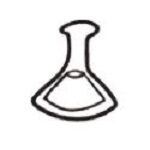STRATEGY FOCUS
MAKING MEANING WITH METAPHOR
PURPOSE
While metaphors can be tough nuts to crack, they help students transfer theirlearning by making an abstract application of knowledge and skills to a new situation. Metaphors, commonly studied and used in the ELA classroom because of their rich imagery and abstractness, can help students in any content as they think about their learning. Through metaphor, students make associations and connections they would not otherwise make, gaining insights into relationships between ideas that in turn provide a deeper understanding of the new learning (Sousa, 2022). By changing the way we approach thinking, metaphors can open up different parts of the brain – the parts that are stimulated by images, ideas, and concepts. So metaphorical thinking can also help “think outside the box.”

PROCESS
- Before asking students to make a metaphor connection with the content, they first need to understand metaphor. A metaphor is a figure of speech in which two unrelated items or ideas are compared. Below are a few examples with an example think aloud:
-
-
- She has a heart of gold.
- Listening to a good song is a jolt of caffeine; it gets me going in the morning.
- The detective kept a stone face during the interrogation of the suspect.
-
Think Aloud Example: The metaphor ‘She has a heart of gold’ uses the phrase ‘heart of gold’ to mean that the girl’s heart is pure, just as 24K gold is gold in its purest form.
- Access students’ prior knowledge about metaphors by inviting them to share examples and explanations. Check for understanding and clear up any misconceptions.
- Once it is clear that students have an understanding of metaphor, invite them to apply their understanding in the context of your content. Plan for metaphor making by incorporating resources and stimuli that support students in making connections (e.g., postcards, quotes, pinback buttons, emojis, etc.).
- Provide a prompt that invites students to make the comparison between the resource and the learning objective, providing ample time to reflect and formulate a metaphor. As students write, walk around the room to formatively assess and provide feedback.
- Use an Academic Dialogue strategy to have students share their metaphors with a partner and explain their thinking around the connections they made.
PROBING QUESTIONS
CONSIDERATIONS
- How did Making Metaphor help you think about the content differently?
- What was the most difficult aspect of creating a metaphor to convey your thinking?
- How was your thinking similar or different from someone else?
-
- When introducing Making Metaphor, use familiar content to practice the process of metaphor making.
- Making Metaphor can be used before a unit of study to determine prior knowledge or feelings about a topic, and then revisited during and after the unit based on the new knowledge.
- Modify the Making Metaphor strategy to include the option of making similes (similar to a metaphor, but uses the word “like or as” to make the comparison).
CONTENT APPLICATIONS
 ENGLISH
ENGLISH
LANGUAGE ARTS
After reading about social media, students select a postcard that represents a metaphor to a pro or con of social media. For example, if a student chooses a postcard of a bird, they might reflect “social media gives you a bird’s eye view of other people’s lives.”
![]()
SOCIAL STUDIES
Before studying geography, students choose a photograph that represents their understanding of a geographical region. For example, with a photograph of a geographic region with water, they might reflect, “water is life; without water, humans would not survive.”
![]()
WORLD LANGUAGES
UNDER CONSTRUCTION

VISUAL & PERFORMING ARTS
When studying Impressionism, students view examples of Impressionistic art and make a metaphor. For example, “life is an impressionistic painting, we are all dots on the canvas of earth.”
![]()
HEALTH & PHYSICAL EDUCATION
UNDER CONTRUCTION

SCIENCE
After studying the circulatory system, students choose a machine that represents their understanding of the system. For example, “the circulatory system is a centrifuge; it removes waste from the system and a centrifuge separates components of a fluid.”
![]()
MATHEMATICS
UNDER CONSTRUCTION
